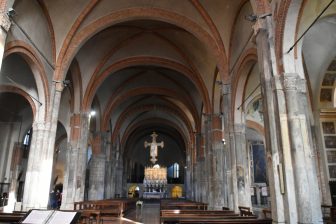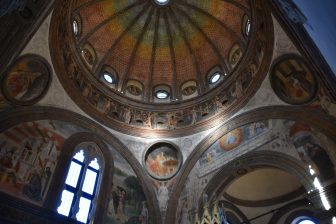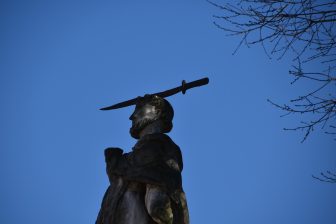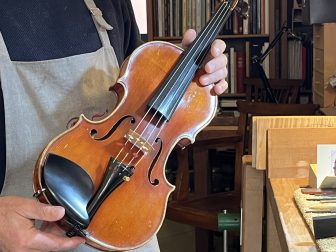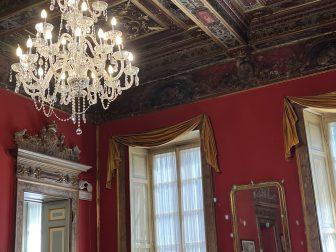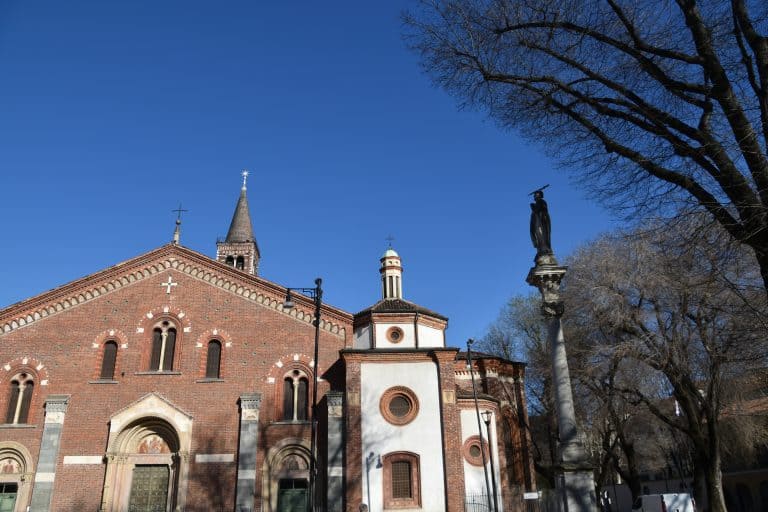
[ Mar.2019 ] On the last day of our stay in Milan in Italy this time, we really felt like eating Cotoletta alla Milanese, so we went all the way to the restaurant called La Pesa 1902.
It was great, as per usual.
The starter was the assorted ham and salami, which was very good, too.
On the menu we saw many attractive dishes, so next time, we would like to try them.
After eating, we still had plenty of time before our flight, so decided to go to the Navigli area, where we had not been for some time.
Navigli is really a night town for young people, so we found it not so special in the day time, to be honest.
The only thing we noticed was a good-looking large church, so we went there.
According to the information board in front of the building, this church is called Basilica of Sant’Eustorgio and it is said that it could have been founded in the 4th century by St. Eustorgius, who was the bishop of Milan.
However, it is more likely that it was founded in the 6th Century by Eustorgius II, who was his successor.
Apparently, it is one of the oldest churches in Milan.
In the early days, this church had the relics of the Three Kings, up until Barbarossa (Holy Roman Emperor, Frederick I) transferred to Cologne.
In the 13th century, the Dominican Order took over here and radically altered it in the 13-14th century, adding the bell tower and other things.
The last restoration work was done between 1953 and 1966 and its original Lombard-Romanesque forms were restored.
After reading this, we went in there and found that it was huge and spacious and dark.
At the back of it, there was a chapel which looked like a ruin.
At the corridor on one side, there was a counter with a middle aged woman.
She called over my husband and told him “The chapel at the end of this corridor is the most important. It is as important as the Santa Maria delle Grazie where the ‘The Last Supper’ of Da Vinci is. There is an ancient graveyard underneath here”.
She was enthusiastic, like a saleswoman.
It cost €6 to enter that part, but because of her enthusiasm, we bought the tickets.
This is the Portinari Chapel.
The leaflet she gave us says that the construction of the chapel was started in 1462 when Pigello Portinari, a wealthy banker who 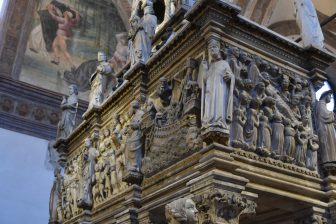
Saint Peter of Verona is a Dominican monk who was martyred by an axe to the head when he was working in Milan.
Actually, there was a statue of a saint outside of the church with a sword on his head and I was wondering what it was.
The chapel was certainly worth seeing.
It was colourful and beautiful.
The coffin of Saint Peter was decorated magnificently.
It is apparently made of the marble from Carrara and the supporting pillars are marble from Verona.
After that, we went to the ancient graveyard in the basement.
It was found during the excavation in the 1950s and it is the graveyard of a mixture of Pagan, Christian and German tombs, according to the leaflet.
This big basilica was built on a cemetery.
It is made up 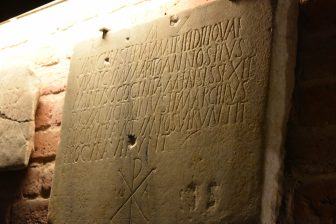
Within that we found a tomb stone of an Exorcist as well as the one of a woman who lived for more than 100 years.
To my surprise, this 100 year old woman’s stone was familiar to me, so I looked into it later and found that one of my social network ‘friends’ had written about it.
According to him, her name is Varicia Asteria.
On the stone it apparently says ‘a faithful mother and wife. Lived with husband more or less 80 years, 6 months and 21 days’.
Interesting, isn’t it.
So we had an unexpected satisfying time here.


